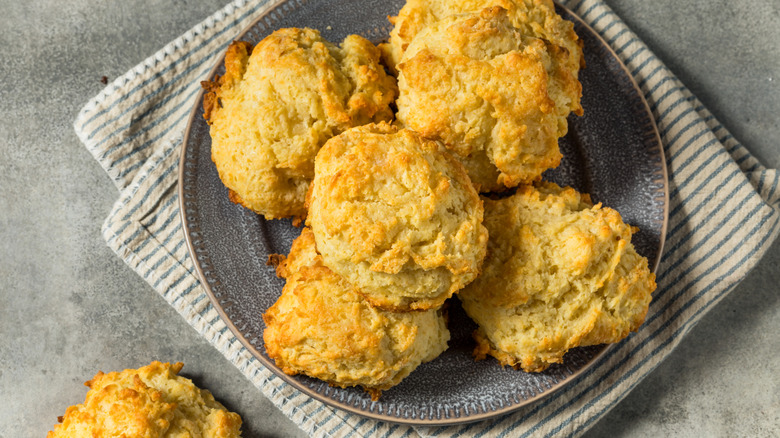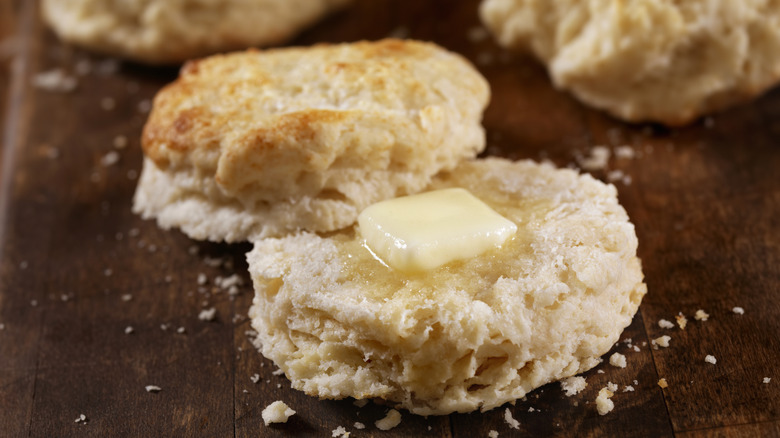What's The Importance Of Using Buttermilk In Biscuits?
Perhaps there are Southern foods more iconic than the classic biscuit, but not many. Certainly, there are few foods more craveable and comforting, especially when biscuits are smothered in sausage cream gravy or coated in sweet jam. The tender, flaky layers are perfect for absorbing flavor while retaining their lightly crisp outer crust — and we have buttermilk to thank for helping to create all of that deliciousness.
Hundreds of years ago when the Southern-style biscuit was still being perfected, the term "buttermilk" referred to the creamy, tangy liquid left over from churning butter. Practically minded housewives saved this rich byproduct and began adding it to baked goods like biscuits. These women likely realized via observation that buttermilk biscuits were taller, softer, and tastier overall than those made without it, cementing buttermilk as a key ingredient to this delicacy.
What these women probably didn't know was the science behind why buttermilk makes a better biscuit. Not only does it add more moisture and fat to the dough, but it also contains acids vital to helping biscuits rise and creating those signature layers. The lactic acid in the buttermilk chemically reacts with leaveners like baking powder or soda, releasing carbon dioxide that produces little pockets to make your biscuits bigger and fluffier.
How buttermilk and biscuits became besties
While today's biscuits evoke images of elevated, indulgent breakfast sandwiches and honey butter-soaked treats, the recipe they evolved from was actually fairly lackluster. Containing little more than flour, water, and salt, the original biscuits were hard, cracker-like rations given to sailors. Salt acted as a preservative, while minimal moisture helped prevent spoilage on long journeys across the sea.
Once this recipe hit plates in the United States, however, Southern Americans did what they do best — they used simple ingredients and practical techniques to create something impossibly delicious. Farms flourished throughout the South, giving cooks ready access to soft wheat flour, butter, and the all-important buttermilk. Biscuits quickly became more palatable, especially when leaveners were invented in the mid-19th century to facilitate the above-mentioned chemical reaction, resulting in the buttermilk biscuits we know and love today.
Of course, most people no longer churn their own butter, so it's understandable if buttermilk isn't a staple ingredient in your kitchen. However, you can still reap all the benefits by making a buttermilk substitute with vinegar and regular milk. The vinegar will react with the leaveners for a nice, tall biscuit while the milk provides moisture and a bit of fat to create the tender, flaky bite you're looking for.

